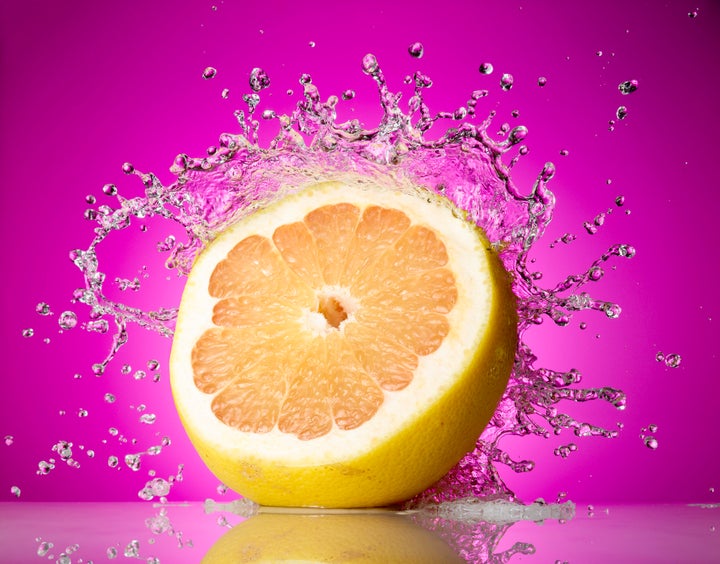Of all the great things in life, sex can be one of the most rewarding.
When done correctly, regular sex can improve your relationship and sense of wellbeing. Not to mention it feels pretty darn good. But if you're a man who has sex with women, there's one thing you'll need to master before you can achieve the highest levels of sexual pleasure. It's the...
When it comes to the female reproductive system, things can get complicated fast. Yes, the vagina -- a term often used when people really mean the vulva -- can be delicate and complex (and also, by the way, tough AF).
A man's understanding of the vagina can dramatically affect his love life. Basically, if you're well-versed in vag, chances are your partner will want to get randy more often, thus leading to a slew of health benefits for the both of you.
Studies show that men who have sex at least twice a week have better heart health and lower risk of cardiovascular disease. Good sex also releases endorphins, which can reduce stress and improve sleep for everyone.
But better sex and foreplay don't magically happen overnight. That's why we put together a list of 7 things men should know about the vagina, so they can master the fine art of good sex.
1. When you say "vagina," you probably mean "vulva."
Technically speaking, vagina refers to the muscular, elastic canal which leads to the cervix and uterus. This is the "hole" where the penis or fingers are (usually) inserted and through which babies pass during birth.
"Vulva" is the term that describes all of the external organs that make up female genitalia. Basically, it's everything you're looking at when you're down there. The vulva includes the vagina, the pubic mound, the labia majora (the outer folds of the vulva) and labia minora (the smaller, inner folds), the opening of the urethra (the pee hole) and the clitoris (more on this very important part later).

2. Women can get erect, too.
Just as a man's penis swells with blood when he's aroused, women -- or, rather, their clitoris -- can become erect, too.
When a woman is turned on, blood flows to her clitoris, the small, round nub just above where the two inner lips meet. This causes the clitoris to swell and become sensitive to the touch. Be careful, though: The head of the clitoris can become overly sensitive and may retract underneath the hood to avoid further stimulation.
3. The clitoris is a powerhouse for pleasure.
With an estimated 8,000 nerve endings, the clitoris serves one purpose and one purpose only: to make a woman feel good. In fact, it's the only human organ that exists solely for pleasure, according to Dr. Hilda Hutcherson, a gynecologist with Columbia University and author of Pleasure: A Woman's Guide To Getting The Sex You Want, Need and Deserve.
And there's more to that beacon of pleasure than the little nub that peeks out. The clitoris has a body and two legs that extend within the body and run alongside the pubic bone.
These parts can be "very sensitive," Hutcherson told The Huffington Post. "I usually tell women and their partners to move around and try different positions [during foreplay and intercourse] to stimulate all the clitoral tissue and not just the head."
4. Just because a woman's vagina isn't lubricated, that doesn't mean she's not aroused.
While women are capable of lubricating naturally, Hutcherson says there are circumstances that can make it more difficult. For example, women may have a harder time lubricating naturally after menstruation. Certain medications and antihistamines also make lubrication more difficult, as do changes in hormones, birth control and age.
"Vaginal lubrication is one of those things that are really misunderstood by men," Hutcherson said, adding that most men don't realize that a woman can be aroused without having any wetness.
Some women may even take longer to become aroused and lubricated if they've been in a relationship for a long time. "In the beginning of a relationship, you lubricate very well and really quickly [because of all] the chemicals and hormones that are rushing through your body," Hutcherson explained. "Over time, those chemicals start to decrease after you've been with the same person for a while."
In either case, Hutcherson suggests that men should be patient and spend more time on foreplay if a woman isn't lubricated enough. "Sometimes it just takes a lot longer for a woman to get aroused," Hutcherson said. "Men don't understand why that happens."

5. Most women don't reach an orgasm with vaginal intercourse.
"Men like to think that there's something in the vagina that they're going to strike and cause an orgasm," Hutcherson told HuffPost. "They think women will have these mind-blowing orgasms from their penises alone, and it just doesn't happen that way."
In fact, a 2009 study revealed that about 75 percent of all women never reach orgasm from intercourse alone (that is, without the help of sex toys, or oral or digital stimulation). According to Hutcherson, foreplay and external stimulation can be far more important than penetration when it comes to women achieving orgasm.
She suggests beginning with gentle strokes to the clitoris and the labia, which can be very sensitive, but is often neglected. And if you really want to get a woman going, Hutcherson says that oral sex is "the easiest way for most women to experience pleasure."
6. When it comes to a woman's sexual stimulation, different strokes for different folks definitely applies.
One of the biggest mistakes a man can make when trying to please a woman is assuming that all women are stimulated in the same way.
"Every woman is different and they're not all going to respond in the same way," Hutcherson told HuffPost. "Women can have different parts of their bodies that are more sensitive than others." For example, one person may orgasm from clitoral stimulation, while another can only reach climax through penetration. The trick is to switch up the positions, techniques and areas of stimulation to see what the woman responds best to.
"Men shouldn't try to force a woman into having an experience that they think the woman should be having," Hutcherson said. "There's fun in exploring what gives a particular partner pleasure, discovering together what turns each other on."
7. This is how you find the G-spot.
The G-spot is a very controversial subject in the world of gynecology, and while some experts believe they have its exact location mapped out, others doubt that it even exists. Hutcherson believes the elusive G-spot is an area of glands near the urethra-side of the vaginal wall.
"The G-spot is not a spot," Hutcherson told HuffPost. "It's an area in the vagina that gives a woman the most pleasure, but it varies from woman to woman."
To find this "spot," Hutcherson offers her clients the following directions:
- Lubricate the fingers of the dominant hand and insert them, palm facing upwards, into the vagina.
- Reach the fingers all the way back until you feel the cervix.
- Once you hit the cervix, pull the fingers out slightly and rub the top of the vaginal wall where it feels most stimulating.
- Rub the area by curling your fingers, "like you're saying come hither against that front wall," Hutcherson says.
- Begin with light pressure then gradually add more pressure.

The most important thing to remember when handling, observing or adoring a vagina is to understand its keeper: The woman.
"Every person is different and every individual will have pleasure from different things," Hutcherson said. "That's the fun of being human.Try different things, have an open mind and be adventurous to find out what really works for both parties."

